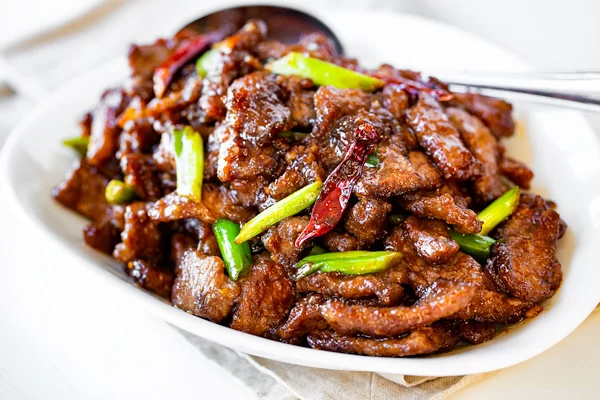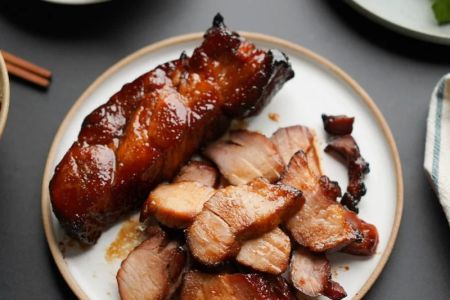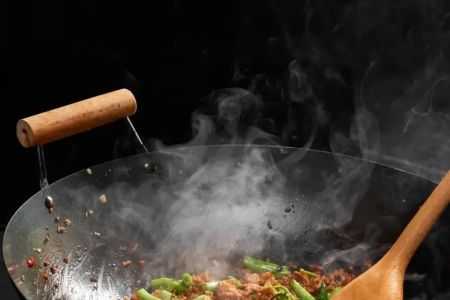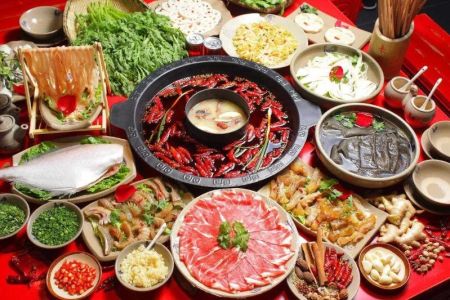How to Make Chinese-Style Mongolian Beef at Home
- Introduction to Mongolian Beef
- Key Ingredients for Mongolian Beef
- Step-by-Step Guide to Making Mongolian Beef
- Tips for Perfect Mongolian Beef Every Time
- Personal Experience: A Taste of Mongolian Beef
- Recommended Products for Authentic Mongolian Beef
Introduction to Mongolian Beef
Mongolian beef is a popular Chinese dish known for its sweet, savory sauce and tender beef. This dish is a staple in many Chinese restaurants, but making it at home can be both fun and rewarding. The dish typically features thin slices of beef stir-fried with green onions and a flavorful sauce made from soy sauce, hoisin sauce, and brown sugar, creating a perfect balance of sweet and salty. While it’s called "Mongolian" beef, it’s not traditionally from Mongolia; rather, it was created in the U.S. and has become a favorite in Chinese-American cuisine.
Why Make Mongolian Beef at Home?
Making Mongolian beef at home allows you to customize the flavors and ingredients to your liking. You can use high-quality beef cuts, adjust the sweetness of the sauce, and even add extra vegetables if desired. It’s also a more affordable way to enjoy this restaurant-style dish in the comfort of your own kitchen. Plus, it’s a relatively simple recipe that’s perfect for beginners or those looking to impress with minimal effort.
Key Ingredients for Mongolian Beef
The key to making great Mongolian beef is the sauce and the beef itself. Below are the essential ingredients that will help you achieve an authentic and flavorful dish:
Choosing the Right Beef Cut
For Mongolian beef, the best cuts of beef are those that are tender and quick-cooking. Flank steak or sirloin are ideal choices, as they are lean but tender. Make sure to slice the beef thinly against the grain to ensure it remains tender during cooking.
Sauces and Seasonings
- Soy sauce – provides the salty umami flavor.
- Hoisin sauce – adds sweetness and depth.
- Brown sugar – balances out the savory flavors with a touch of sweetness.
- Ginger and garlic – enhance the overall aroma and flavor profile.
- Sesame oil – adds a nutty undertone to the dish.
Step-by-Step Guide to Making Mongolian Beef
Now that you have your ingredients, follow these easy steps to create Chinese-style Mongolian beef at home:
Step 1: Prepare the Beef
Start by thinly slicing the flank steak or sirloin against the grain. This ensures the meat stays tender when cooked. In a bowl, mix the beef slices with a bit of cornstarch to help it crisp up during frying.
Step 2: Cook the Beef
Heat vegetable oil in a large wok or skillet over medium-high heat. Add the beef in batches, making sure not to overcrowd the pan. Stir-fry the beef for about 2-3 minutes until it is browned and crispy on the edges. Remove the beef and set it aside.
Step 3: Make the Sauce
In the same wok, add a little more oil if necessary. Sauté garlic and ginger for about 30 seconds, until fragrant. Then, add soy sauce, hoisin sauce, brown sugar, and sesame oil. Stir the sauce together and let it simmer for 2-3 minutes until it thickens slightly.
Step 4: Combine Beef and Sauce
Add the cooked beef back into the wok and toss it in the sauce, making sure every slice is coated. Add green onions and stir for another minute, allowing the flavors to meld together.
Step 5: Serve and Enjoy
Once everything is well-coated and heated through, transfer your Mongolian beef to a serving plate. Serve with steamed rice or noodles and enjoy a delicious homemade Chinese meal!
Tips for Perfect Mongolian Beef Every Time
To ensure your Mongolian beef turns out perfectly every time, here are a few tips:
Tip 1: Use Cornstarch for Crispy Beef
Coating the beef in cornstarch before frying helps create a crispy texture that contrasts beautifully with the tender beef and sticky sauce.
Tip 2: Adjust the Sweetness
If you prefer a sweeter dish, add a bit more brown sugar to the sauce. If you like it saltier, increase the soy sauce a little. This recipe is flexible, so feel free to adjust it to your taste.
Tip 3: Add Vegetables for Extra Texture
If you want to add more variety to your Mongolian beef, consider adding vegetables like bell peppers, carrots, or snow peas. They’ll provide additional color, texture, and nutrients to the dish.
Personal Experience: A Taste of Mongolian Beef
When I first tried Mongolian beef at a local Chinese restaurant, I was hooked by the combination of the sweet sauce and crispy beef. Inspired by that experience, I decided to try making it at home. After a few attempts, I perfected my version and now enjoy it regularly. What I love most about this dish is how customizable it is – you can make it sweeter, spicier, or even add extra veggies, depending on what you have on hand.
Recommended Products for Authentic Mongolian Beef
If you're looking to make your Mongolian beef at home even more authentic, check out some high-quality sauces and ingredients like soy sauce, hoisin sauce, and sesame oil at Chinese Food. These products will elevate the flavor of your homemade Mongolian beef and help you achieve a restaurant-quality dish right in your own kitchen.







![Top Chinese Restaurants for Authentic Cantonese Cuisine in [Your City]](https://img.gochinarose.com/d33/2507/4157910400_450x300.webp)
